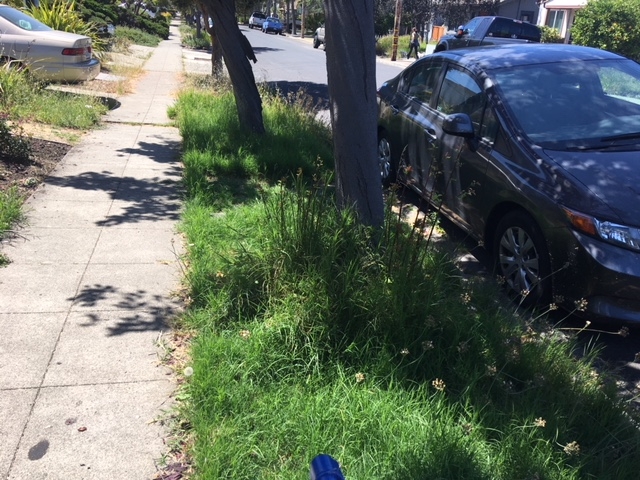Advice for the Home Gardener from the Help Desk of the
UC Master Gardener Program of Contra Costa County

I know in the future that we should try to pull the weeds before they flower, but I'm not sure how to proceed with the situation now. Based on my research, I was thinking of trying to hand-pull as many weeds as we could in the next few weeks. I was then going to solarize the area for 6-8 weeks with two layers of clear painter's plastic with PVC between them. First of all, do you think this is a good plan? Could solarizing the soil damage the tree roots? If for whatever reason you think this is not a good plan, please let me know what you suggest. I am open to herbicides if necessary. Although I like the idea of getting rid of the weeds this summer to plant when the rains start, I am open to a different plan that would manage the weeds better long-term. Thank you very much for your assistance!
Help Desk Response: Thank you for contacting the UC Master Gardener Program Help Desk with questions about your parking strip in West County and how to deal with the weeds that have been there for quite a while. Pulling the weeds and then solarizing the soil would help kill the weeds, but it could harm the tree roots as you suspected, so it is not recommended.
A better idea is to pull as many weeds as you can, especially getting the roots out, and then sheet mulch the area. Sheet mulching is an excellent way to kill weeds and improve the soil at the same time. Water the area thoroughly and then lay down cardboard or burlap. The cardboard can be purchased in rolls or you can use recycled boxes. Just make sure to remove any tape or plastic labels. Overlap pieces 6 to 8 inches, completely covering the ground with no gaps. Keep all material away from the tree trunks, though. You'll need to leave 6 to 8 inches clear. You'll need to monitor these areas for weeds and remove them. Water the cardboard so it's evenly moist to keep it in place and make it more malleable.
On top of the cardboard, put a layer of compost about an inch thick. This will "jump start" the decomposition process. Then, on top of the compost apply a thicker layer of chipped plant material (often called “mulch”). This should be 3 to 5 inches thick. You can often get chipped plant material for free from tree companies, although they will often dump an entire truck load in the driveway and this may be too much for your project!
If you are thinking of installing drip irrigation in the parking strip, it should go on top of the cardboard and under the compost.
You should be able to do your fall planting using this sheet mulching method. Continue to water the area occasionally this summer to make sure it's ready for planting when you are.
After at least 10 years of weeds growing uncontrolled, you will have a large number of weed seeds in your soil. There's a saying: one year of seeds gives you 7 years of weeds. These seeds remain viable for a long -time so you need to continue to be vigilant. When you plant your new landscape, you'll expose the soil, giving the seeds a chance to sprout. You'll need to really watch for these and pull them before they can become established and certainly before they set seeds. You will also need to maintain the mulch layer, adding additional chips when you notice thin spots.
And be aware that you will probably see weeds growing in the mulch. Weed seeds can travel long distances and many will end up alighting on top of the mulch where they will sprout, but they'll be very easy to pull out if you don't let them gain a foothold.
These links are to more information and diagrams about sheet mulching, as well as one from Washington State University about using arborist chips:
http://sacmg.ucanr.edu/files/163135.pdf
http://ccmg.ucanr.edu/files/221117.pdf
http://cru.cahe.wsu.edu/CEPublications/FS160E/FS160E.pdf
I hope this information is helpful. Don't hesitate to contact us if you have more questions. And good luck with your project!
Help Desk of the UC Master Gardener Program of Contra Costa County (SHE)
Note: You can also subscribe to the Biog.ogram of Contra Costa's Help Desk is available almost year-round to answer your gardening questions. Except for a few holidays (e.g., last 2 weeks December), we're open every week, Monday through Thursday for walk-ins from 9:00 am to Noon at 2380 Bisso Lane, Concord, CA 94520. We can also be reached via telephone: (925) 608-6683, email: ccmg@ucanr.edu, or on the web at http://ccmg.ucanr.edu/Ask_Us/. MGCC Blogs can be found at http://ccmg.ucanr.edu/HortCoCo/ You can also subscribe to the Biog.